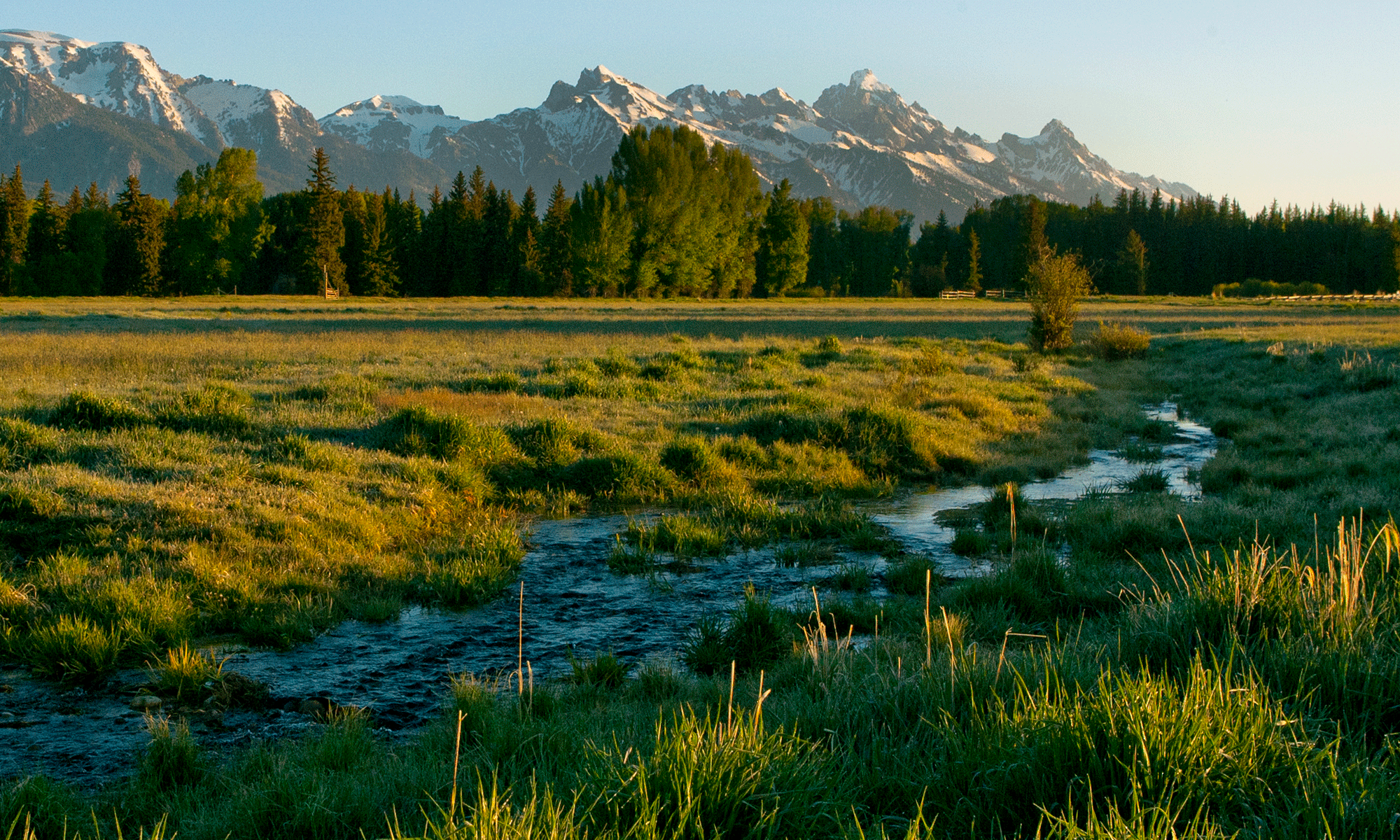Wyoming Ranch Properties Take Many Forms
Iconic western properties blend a rich lifestyle with land stewardship.
by Staff Writers
The iconic sign atop Teton Pass has long heralded Jackson Hole as “the last of the old west.” While the majority of those residing in the region have gravitated away from the valley’s farming and ranching roots in the ninety-or-so years since the signs were erected, ranching remains a tradition and a way of life for stalwart families across the mountain west.
The modern landscape is defined, in part, by lands these families have tended, and in many cases have helped to preserve. Whether through applied conservation easements or practical stewardship, the western ranching ideals of Jackson Hole and the surrounding region preserve viewsheds, epitomize open spaces, and serve as habitat and migration corridors for wildlife.
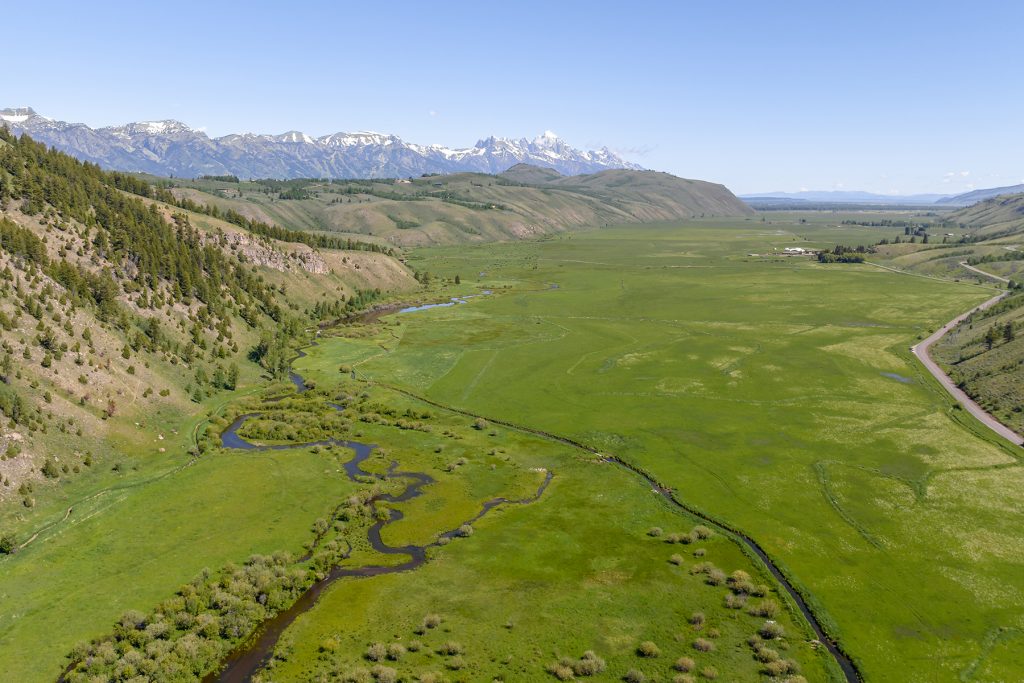
The Mead Ranch, bounded by East and West Gros Ventre Buttes, occupies the southern end of the Spring Gulch corridor just outside of the town of Jackson. The central valley location was among the first homesteaded within Jackson Hole, and is currently utilized in support of the family’s sustainable cattle ranching operation.
The ranch maintains Spring Creek priority water rights that date back to 1898. Several springs and seeps within the property provide additional water for elk, moose, and mule deer that frequent the ranch. Waterfowl including ducks, geese, and sandhill cranes feed and loaf among the creek frontage, which extends for more than a mile within the property.
The ranch’s 257 acres feature a conservation easement that preserves the historical farming and ranching use of the property’s southern end. Approximately sixty-four acres to the north remains unencumbered and provides for a variety of use opportunities. The eastern boundary of the ranch abuts undeveloped a Wyoming state lands parcel on East Gros Ventre Butte. To the northeast, projecting acreage across Spring Gulch Road encompasses a gently-sloped bench screened by aspen groves and overlooking the entirety of Spring Gulch to the Tetons beyond.
On the western slope of the Tetons, the Travis Teton Ranch comprises 318 acres adjacent to public land in Alta, Wyoming. The ranch is currently utilized, in part, for a combination of alfalfa and barley production and benefits from active agricultural status combined with Wyoming’s friendly tax environment.
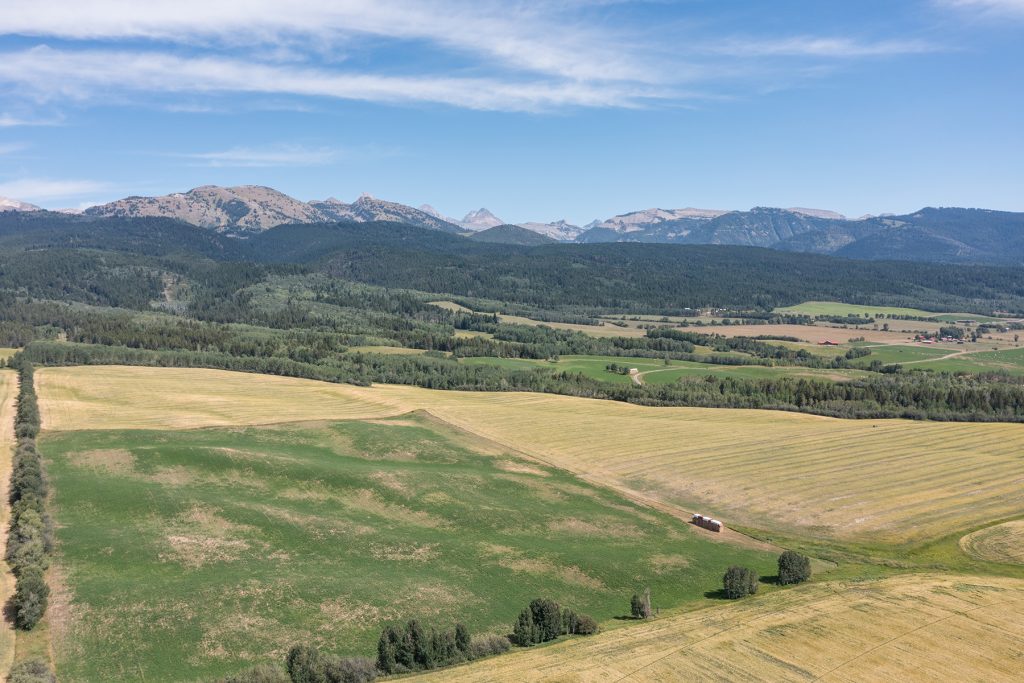
Kiln Creek flows through the property, as do smaller and seasonal waterways. Mixed stands of aspen and evergreens strip throughout the property’s gently rolling contours to naturally divide the ranch’s cultivated lands. Open meadows and forested areas connect to the Targhee National Forest along the parcel’s eastern edge. An approximately 120-acre Bureau of Land Management parcel adjoins the ranch to its northeast for complete eastern access to public lands.
Of course, not all western ranches are defined solely by their production. The Rocky Mountain west has a rich tradition of guest ranches, and in the Jackson Hole region, the residential ranch frequently connotes large acreage without the traditional agricultural or utilitarian purposes. Big Rock Ranch, located just a mile south of Wilson, Wyoming, combines three separately deeded parcels into a nearly-75-acre residential ranch on a private and peaceful location off North Fall Creek Road. Set atop a small, elevated bench at the mouth of Black Canyon, Big Rock Ranch features open meadows, mature groves of aspen and evergreen, and a tranquil stream that adjoins Trail Creek. The ranch and the forested slopes below Teton Pass are frequented by elk, moose and other wildlife. Views from Big Rock Ranch include the pastoral Fish Creek Ranch and down-valley vistas, while Glory Bowl is prominently visible above. A refined log cabin on the property provides an option for current enjoyment, or for guest or caretaker accommodations to compliment a main home.
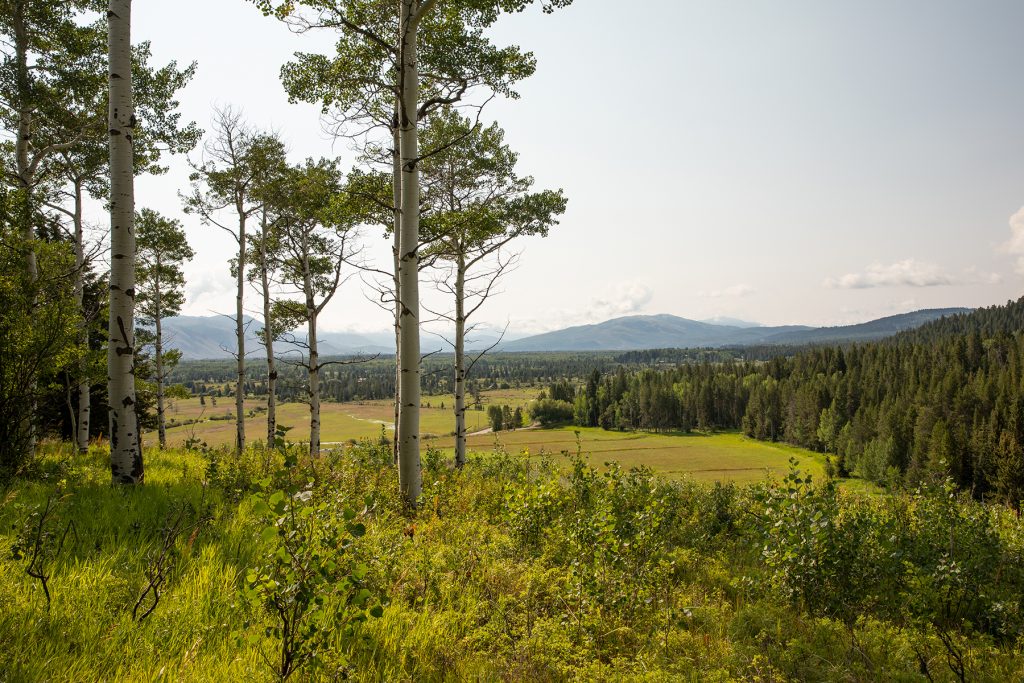
The River Ranch, outside of Riverton, Wyoming offers more than 800 acres along the Wind River. The ranch is accessed via the Black Bridge, a relocated railroad bridge that provides an iconic entrance to the private inholding of the Wind River Reservation. Current ranch operations include both agriculture production, and a private hunting club that is supported by a new hunting camp with two modern cabins. Water rights to the ranch date to 1907 and 1909 for diversion from the Wind River, and are augmented by the ranch’s two clear springs. Native prairies, riparian corridors and stands of cottonwood and willow define this central Wyoming ranch that has been family-run for nearly sixty years.
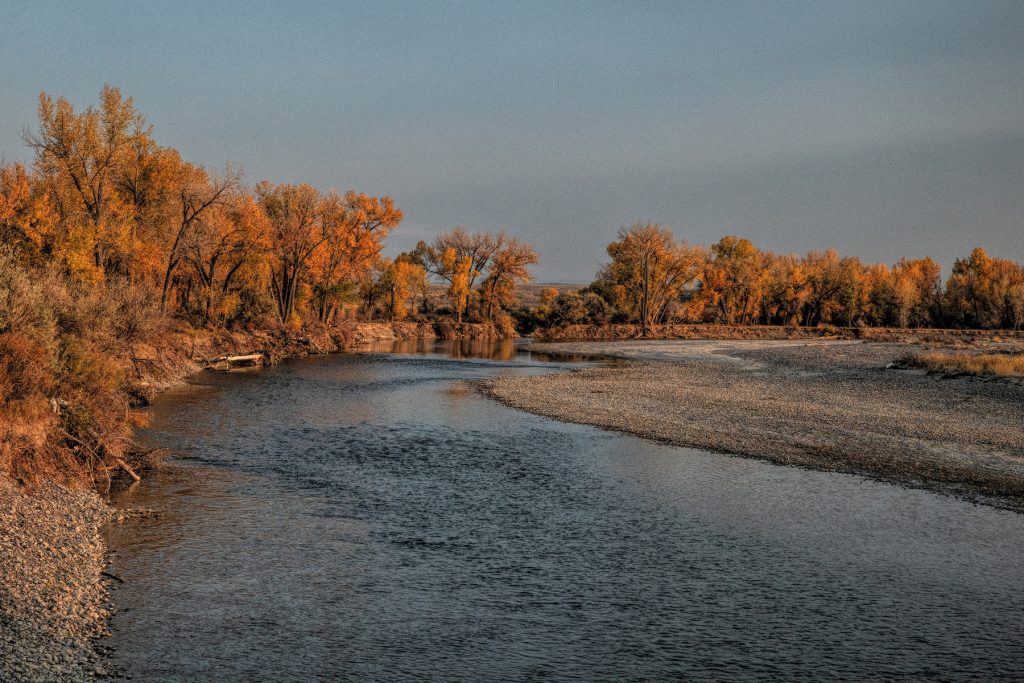
Also located in the central portion of the state, and only ten miles outside of Lander, the Twin Creek Ranch occupies 418 acres in the rolling bluffs and breaks northwest of the Wind River Mountains, Here, the ranch is characterized by undulating sage and grass-covered plateaus, views to the southern mountains, and the eponymous Twin Creek which winds through the property. The ranch is surrounded on three sides by public land—a combination of BLM and Wyoming state parcels—providing thousands of contiguous acres for recreation. Two creekside homes provide the ranch with a combined 4,200 square feet of residential space.
Regardless of the locale, Wyoming ranches are emblematic of the wide array of natural beauty and diverse landscapes that the state has to offer. From working Teton vista ranches in Jackson Hole to large acre recreational ranches throughout the state, Wyoming offers unrivaled opportunities for stewardship and a multitude of uses.
